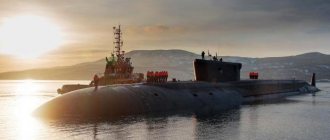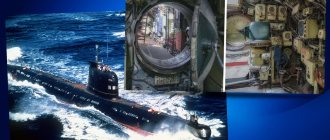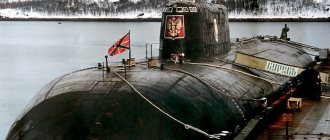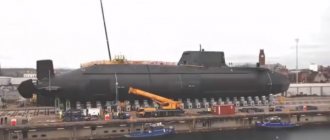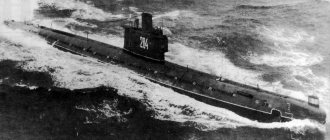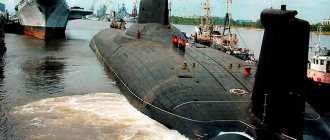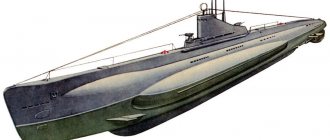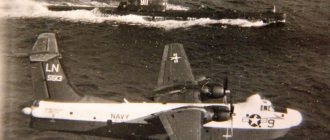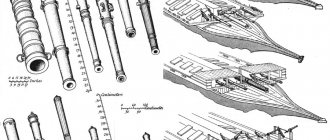At the beginning of August 2022 it became known that the first Soviet nuclear submarine (NPS), K-3 Leninsky Komsomol, would depart from the Northern Fleet to Kronstadt - to its eternal berth at the Museum of Naval Glory. We tell you the story of this unique submarine
Nuclear submarines today are the basis of the submarine fleet of all nuclear powers. Capable of circumnavigating the world (or more than one) underwater, representing their country in any, even the most distant corner of the World Ocean, they seem to have always existed. In fact, the first Soviet nuclear submarine, the K-3 Leninsky Komsomol, raised the naval flag as recently as July 1, 1958. Three days later, she was the first in the Soviet Union to start running under the main power plant - a nuclear reactor, and four years later, for the first time in the USSR, she surfaced from under the ice at the North Pole.
One boat - one torpedo
The first Soviet nuclear submarine was designed as a carrier of a single torpedo of colossal caliber - one and a half meters - aimed at enemy naval bases! This idea did not come out of nowhere. By the early 1950s, when work on the first nuclear submarines in both the USSR and the USA left the preliminary design stage, the Soviet Union did not have adequate means of delivering nuclear weapons to the territory of its main enemy, America. The Tu-16 bomber had just begun to be tested; intercontinental missiles, especially sea-based ones, simply did not exist. But the initiator of the project, the First Main Directorate under the Council of Ministers of the USSR, did not want to waste a boat with unique capabilities for installing ordinary torpedoes on it.
The official start to the development of “object 627,” as the first Soviet nuclear submarine was called for secrecy purposes, was given on September 9, 1952 by a special government decree. This document also indicated the completion date for the design and construction of the boat - 1955. The resolution did not stipulate that the domestic nuclear-powered ship should have an advantage over the American ones in terms of speed, especially underwater, but Soviet designers immediately set themselves such a task. After all, there was no other opportunity to break through the anti-submarine defense line in the Atlantic and Pacific that had been developed during the Second World War.
An unexpected situation for the USSR, when the project and tactical and technical characteristics, as well as the purpose of the ship, were not determined by sailors at all, led to the expected negative result: work on the project was almost stopped. This happened in 1954, when nuclear scientists, assessing that their own knowledge was not enough to complete the work, nevertheless attracted experts from the Soviet Navy to evaluate their work. A group of specialists, led by Rear Admiral Alexander Orel, reviewed the project and presented the results of their work not only to customers from the First Main Directorate of the Council of Ministers, but also to their immediate superior, the Commander-in-Chief of the Fleet, Admiral Nikolai Kuznetsov.
The verdict was clear: in the version with the boat armed with a T-15 torpedo, which had a diameter of one and a half meters, a length of more than 23 meters and a weight of about 40 tons, the project was useless. First of all, because it could only launch towards the target at a distance of up to 50 km from it, and the US anti-submarine defense line in those years began 100 miles away, that is, almost 200 km from the coast. There was one more circumstance that turned the boat’s crew into virtually kamikazes. After the launch of a giant torpedo almost a quarter of the total length of the boat, the ship acquired colossal positive buoyancy and a large trim to the stern. In other words, as soon as the torpedo was fired, the boat almost certainly jumped to the surface of the sea like a jack-in-the-box and did not have the opportunity to immediately dive, becoming an easy target. And for defense she had only two conventional torpedo tubes with two torpedoes - that’s all!
Links
- Assault on the depths: encyclopedia of the domestic submarine fleet)
| [ + ] Russia | |
| Armed forces | Army (armed forces modernization) • Armaments • (infantry weapons • military equipment • aviation • armored vehicles • T-14 tank) • Navy • Military districts |
| Symbolism | Coat of Arms of Russia • Flag of Russia • Motto of Russia • Anthem of Russia • Ribbon of St. George • National symbols of Russia |
| Story | Rulers of Russia • The myth of the centuries-old backwardness of Russia • Changes in borders (territorial disputes) • The future of Russia • Reform of the Constitution of Russia (chronology • text of amendments • voting) |
| Economy | Major projects • Industry • Agriculture • Electric power industry • Tourism • Food security • Import substitution • Russian products • Leading companies |
| Finance | Russian ruble • Central Bank (gold reserve • Digital ruble • SPFS • “Mir” • Mir Pay • Fast payment system • NSPK) • Export • Salaries and incomes • Pensions • Standard of living • Taxes • Deoffshorization • Shadowization |
| Transport | • Transpolar Highway • Northern Sea Route • Seaports (access to the ocean) • Airports • SSJ 100 |
| Technologies | Inventions • High-tech products (new developments) • Defense • Aviation industry • Space • Atom (nuclear energy) • Shipbuilding • Automotive industry • Engine building • IT sector (microprocessors • smartphones) • Robotics • Oil industry |
| Medicine | Medicine • Pharmaceuticals • Vaccination |
| Demography | Emigration • Social policy (maternity capital) • Human capital |
| Achievements | Areas of Russia's leadership • Russia ranks first in the world • Russian records • Tsar-things • Russian sports |
| Culture | Music and songs about Russia • Poems about Russia • Poems about war • Quotes about Russia • Russian language (proverbs and sayings) • Russian character • The best modern films about Russia • The future of Russia in science fiction • Achievements of Russian culture ( modern achievements • new churches • restored monuments • lost monuments) • Cultural policy • Putin style |
| Regions and cities | Regions of the Russian Federation (geostrategic regions) • Cities (centers of economic growth • hero cities • cities of military glory • historical settlements) • Federal districts • Economic regions • Macroregions • Russian Arctic • Symbols of regions |
Soviet "Whale"
The project had to be urgently reworked. As a result, the boat received eight bow torpedo tubes with an ammunition load of two dozen torpedoes. Among them there should have been nuclear ones: by that time their combat units had already begun to undergo testing. And the main weapon of the boat, as planned, was speed. The Soviet Union already knew that American shipbuilders had placed a new power plant in a boat hull not unlike the classic hulls of World War II submarines. This significantly limited their underwater speed: the world's first nuclear submarine, the Nautilus, had 23 knots, and the second, the Seawolf, 20 knots. Soviet designers immediately decided to look for the most streamlined shape of a new type of boat. The search did not take too long: as you know, marine mammals, including whales, have the most optimal shapes for moving underwater. This is what the first Soviet nuclear submarine looked like; during testing, it developed an underwater speed of 28 knots, not even at full speed. For its shape, which was inherited by all subsequent submarines, the first nuclear submarine received the respectful nickname “Whale” from the sailors.
Despite the many problems and difficulties that accompany the creation of any new mechanism, the K-3 boat, albeit belatedly, was built. She was laid down on September 24, 1955 and launched two years later, and a year later the boat became part of the Navy and sailed on nuclear power for the first time. By the way, the main and reserve crews of the first nuclear-powered ship began training in Obninsk back in 1954. So that the sailors could study their ship in advance, they were provided with not only the world’s first nuclear power plant, but also a specially built work stand nearby with the same reactor as on a submarine. In addition, the sailors had to test for themselves many of the constructive and design solutions of the new boat, for which wooden models of its compartments were built. And this allowed not only to properly equip the boat, but also to avoid many problems. There is a well-known incident: the commander’s and navigator’s workplaces in the central post were designed in such a way that both were placed with their backs facing the ship’s direction, which is simply impossible for sailors.
The construction of the boat and its entire service turned into one long experiment, as is always the case with ships that open a new era. And above all, this concerned the main power plant. Of the three options that the designers began working on according to the 1952 decree - graphite-water, with a liquid metal carrier and the classic water-water - they ultimately chose the third option as the most developed. But there were a lot of troubles and problems with it, because all the components and assemblies were built and used for the first time. For example, primary circuit steam generators in which radioactive water circulated caused a lot of problems for sailors. Microcracks constantly appeared on them, which is why the reactor often could not be brought to full power, and the boat simply could not even reach normal speed. There is no need to talk about the fact that constant leaks in the reactor equipment caused increased radioactivity in the air on the boat.
Russian empire
Schilder's submarine
Schilder's submarine
- General designer:
K. A. Shilder - Year of adoption:
— (put into trial operation in 1834) - Manufacturer:
Aleksandrovsky plant (now Proletarsky plant), St. Petersburg - Date of withdrawal from service:
1841 (1847) - Video
Schilder's submarine is an armed experimental submarine. It was Russia's first all-metal ship and the world's first missile submarine, from which, moreover, in 1834, for the first time in the world, missiles were fired from under water, and targets were successfully hit. The ship was also equipped with a periscope, which was rare for submarines of that time. Due to the shortcomings of the muscular drive, official experiments with the submarine were discontinued in 1841 and in 1842-1847. they continued with the author’s money, after which it was finally written off as metal, but not declassified, as a result of which the general public became aware of it almost only 100 years later.
Schilder's submarine, thanks to its original propeller, had a very stylish "steampunk" appearance, as a result of which it was used as a prototype for the submarine that played the "main role" in the cult Czechoslovak science fiction film of 1958 "The Mystery of Back Cap Island".
Aleksandrovsky submarine (photo)
Aleksandrovsky submarine
- General designer:
I. F. Aleksandrovsky - Year of adoption:
1866 - Manufacturer:
Baltic Plant, St. Petersburg - Date of withdrawal from service:
1871 (1901) - Video
Aleksandrovsky's submarine is one of the largest and most advanced submarines of the mid-19th century, the first mechanically driven submarine in the country and the first in the world with an air-independent engine - before that there had been attempts to use only a steam engine. The achieved cruising range (9 miles) and underwater speed (6 knots) far exceeded analogues of that time. The submarine was lost during "unmanned" tests, being submerged to an unusual depth, and then served as a rescue pontoon for 30 years.
Gerna submarine (fourth version)
Gerna submarine (fourth version)
- General designer:
O. B. Gern - Year of adoption:
— (put into trial operation in 1867) - Manufacturer:
Aleksandrovsky plant (now Proletarsky plant), St. Petersburg - Date of withdrawal from service:
1876 - Video
The fourth version of the Gern submarine is an armed experimental submarine, on which a number of innovations were put into practice for the first time in the world: a spindle-shaped hull, a spherical internal bulkhead and a pneumatic installation capable of operating in a combined cycle. If the first and last innovations were subsequently used more than once on submarines in the 19th century, but are now forgotten, then spherical bulkheads are an almost indispensable attribute of modern submarines. It should also be noted that this is perhaps the first and, absolutely certainly, the most powerfully armed torpedo submarine of that time, since a large-sized torpedo suspended under the hull was specially designed for it, significantly superior in almost all tactical and technical parameters to world analogues of that time, but did not go into production due to its high price and size.
Drzewiecki's submarine (third option)
Drzewiecki's submarine (third option)
- General designer:
S. K. Dzhevetsky - Year of adoption:
1880 - Manufacturer:
Nevsky plant - Quantity in series:
50 - Application:
Russo-Japanese War 1904-1905. (after modernization) - Date of withdrawal from service:
1891, 1908 - Video
The third version of Drzewiecki’s submarine is the world’s first serial submarine, produced in the amount of 50 units at once for the defense of sea fortresses. Due to the rapid development of naval affairs in 1891, submarines were withdrawn from combat forces and partly dismantled, and partly used for various underwater work. To exert moral pressure on a potential enemy, one of the submarines was brought to Port Arthur in 1900, where it was equipped with lattice torpedo tubes - and indeed during the Russo-Japanese War of 1904-1905. The Japanese have more than once shown a near-panic fear of submarines. In 1904, two submarines were converted into “semi-underwater” torpedo “low visibility boats”, one of which, “Keta”, while guarding the mouth of the Amur River, carried out 17 combat missions in the summer of 1905, during which it covered 948 miles and had visual contact with enemy. After the war, the Keta boat served in the Siberian Flotilla until September 30, 1908.
The only surviving example of the submarine is in the Central Naval Museum in St. Petersburg.
Submarine "Dolphin"
Submarine Dolphin (destroyer No. 150, destroyer No. 113)
- General designer:
I. G. Bubnov - Year of adoption:
1903 - Manufacturer:
Baltic Plant - Application:
Russo-Japanese War 1904-1905, World War I - Date of withdrawal from service:
1917 - Video
"Dolphin" is the first domestic modern submarine. In November 1904, she was sent to Vladivostok to participate in the Russo-Japanese War, which was ongoing at that time, where, due to its limited range and seaworthiness, it was used for patrolling off the Russian coast. She repeatedly suffered accidents with flooding, mostly due to the gasoline engine that had no alternative at that time. In 1917, she became part of the ship security detachment of the Kola Bay, where she was soon transferred to the training category, and a few days later she sank due to the disorganization of service in the navy after the February Revolution. The same year the boat was written off due to severe wear and tear and in 1920 it was cut into metal.
Underwater minelayer "Crab"
Underwater minelayer "Crab"
- General designer:
M. P. Nalyotov - Year of adoption:
1915 - (Nikolaev)
- Application:
World War I - Date of withdrawal from service:
1918 (1919, 1935) - Video
"Crab" is the world's first underwater minelayer. Submarines of this class were later built in many countries. He repeatedly participated in combat operations on the Black Sea during the First World War, and it is reliably known that at least one enemy warship was killed by its mines. In 1918, as a result of the Brest-Litovsk Treaty, it was received by Germany, then captured by the Entente, which was scuttled during the retreat from Crimea in 1919. In 1935, it was raised and cut into metal. He is an almost indispensable participant in science fiction books about the final period of the First World War on the Black Sea.
Submarine "Bars", 1914
Bars-class submarines
- General designer:
I. G. Bubnov - Year of adoption:
1915 (July 25) - Manufacturers:
Baltic (Revel[1]), (Nikolaev)[2] - Quantity in series:
24 - Application:
World War I, Civil War and Intervention, possibly Winter War - Date of withdrawal from service:
1940 (1955)
The most popular domestic submarines of pre-revolutionary construction, which actively participated in the First World War. The Panther became most famous because in 1919 it won its first victory after the Bolsheviks came to power, sinking an English destroyer and, unlike other domestic submarines of that time, did not fall into oblivion during the Soviet period. It was the only one in the entire series that was not killed in battle and was not decommissioned by the mid-1930s, but was modernized and served for its intended purpose until 1940, and then as a charging station until 1955.
Pride and tragedy K-3
For obvious reasons, the first nuclear submarine in the Soviet Union had to be not only an object for testing various technical innovations for the nuclear fleet. She had the opportunity to test the capabilities of nuclear submarines with her own skin of steel. Already in 1959, she began regular navigation under the ice - first under the edge, and then under serious pack ice, eventually reaching the North Pole.
This was the third long-distance voyage of the K-3 boat, which took place on July 11-21, 1962. First of all, the crew of the boat had to confirm that it and ships like it were capable of long trips under the ice. In addition, Soviet sailors had to pass the North Pole point underwater and rise from under the ice to the surface. All tasks were completed successfully; in 178 hours, the boat traveled 1294 miles underwater and surfaced almost exactly at the pole three times - on July 15, 18 and 19. This was not just an achievement: in this way, Soviet submariners confirmed that Arctic ice would not become an obstacle to nuclear missile submarines. This meant that, if necessary, a missile strike could be launched from there, significantly increasing the strike range of the missiles. Thus, the parity that was broken in March 1959 was restored, when the world's first ascent to the pole was made by the American boat Skate.
The K-3 Leninsky Komsomol service, of course, was not limited to successes alone. And although it was not she who opened the sad account of accidents on Soviet nuclear submarines, but the first nuclear missile carrier K-19, the events of September 8, 1967 led to the most severe consequences at that time. The boat was already finishing its combat service in the Norwegian Sea when a fire broke out in the first two compartments, which claimed the lives of 39 sailors. The rest of the crew also suffered when, in order to prevent the torpedoes from exploding, the commander ordered the pressure in the compartments to be equalized, and air poisoned by combustion products poured into the boat from the first two. As a result, the boat had to return to base on the surface. Later, during the investigation, it became clear that the cause of the tragedy was either greed or the stupidity of one of the workers, who, during a scheduled repair, replaced the copper gasket on the high-pressure hydraulic system with a paronite gasket (a mixture of asbestos and plastic).
Despite periodic problems associated with the fact that the boat was operated in difficult conditions, the K-3 remained in the fleet until October 1987 - almost three decades! During this time, she went into combat service six times and in 14 thousand running hours covered a total of almost 129 thousand miles, that is, she circled the Earth along the equator almost six times. After the submarine was finally decommissioned, it waited for a long time for its fate to be decided. They wanted to turn the first Soviet nuclear submarine into a museum, just as the nuclear icebreaker Lenin became a museum, but the Ministry of Defense did not have the funds for this for a long time. And only in the fall of 2020 it was finally decided that the Leninsky Komsomol submarine would be permanently laid up in Kronstadt, where it would become the main element of the Museum of Naval Glory. She deserved it.
Modern Russia
K-535 "Yuri Dolgoruky"
Project 955 Borei strategic submarine cruisers
- General designer:
V. A. Zdornov[5] - Year of adoption:
2013 - Date of withdrawal from service:
In service - Video
K-535 "Yuri Dolgoruky" and similar submarine cruisers are the world's first fourth-generation submarines armed with ballistic missiles. Compared to submarines of the previous generation, noise has once again been significantly reduced and other indicators have been improved.[6]
K-560 "Severodvinsk"
Project 885 Yasen multipurpose submarine cruisers
- General designer:
V. N. Pyalov[7] - Year of adoption:
2013 - Date of withdrawal from service:
In service - Video
The K-560 “Severodvinsk” and the submarine cruisers of the same type under construction are the first domestic fourth-generation multi-purpose nuclear submarines, have the most powerful weapons in their class and, according to some estimates[8], are the best in the world.
